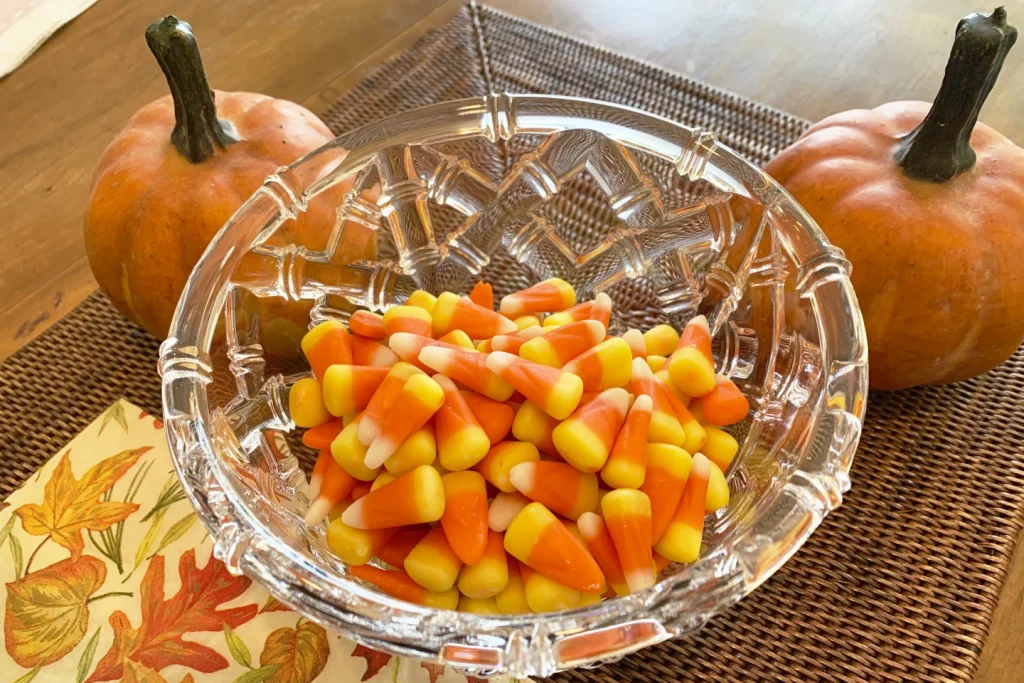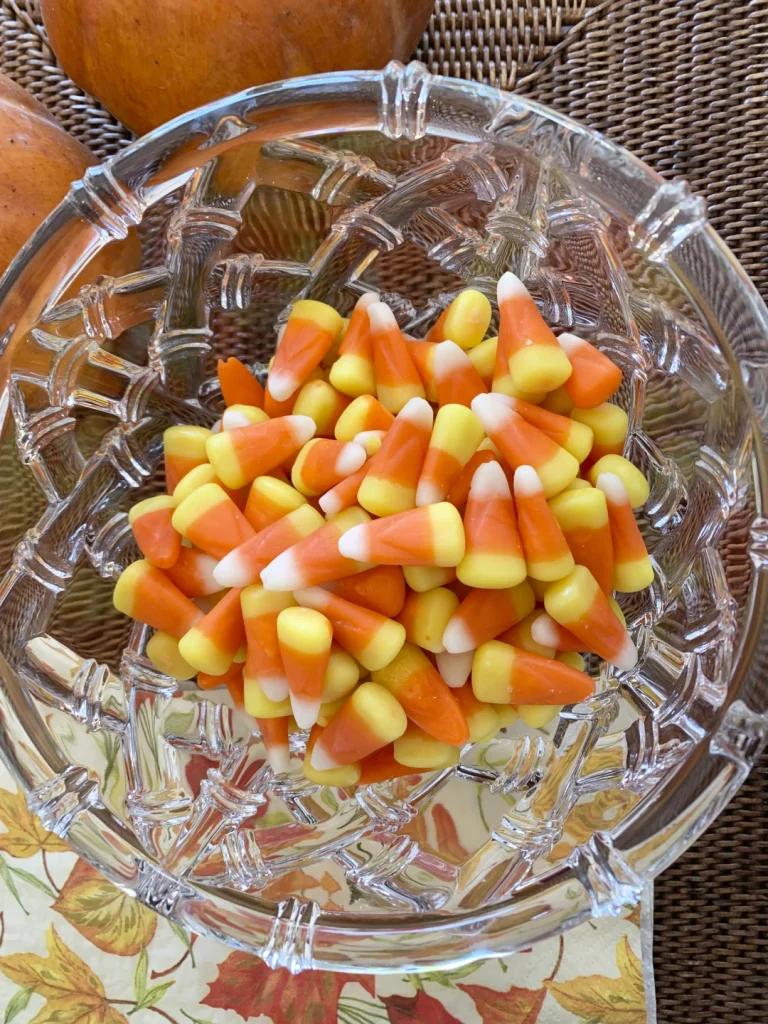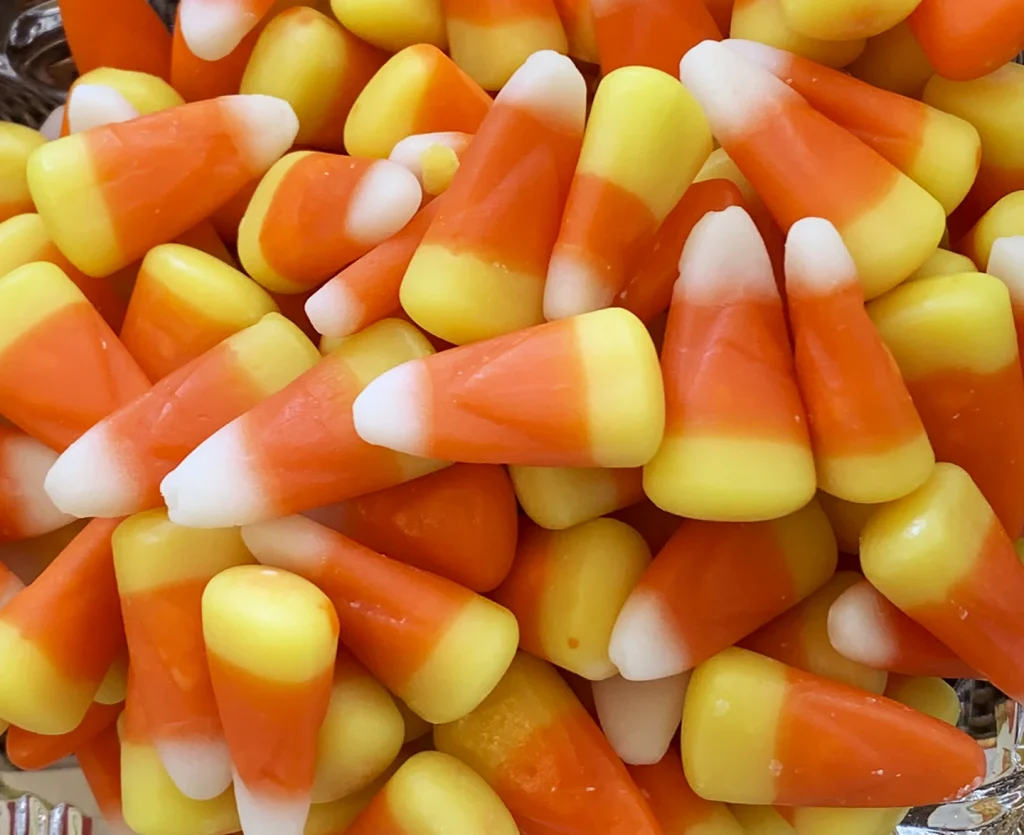The annual Halloween debate over candy corn has once again ignited, with fans and detractors alike passionately defending their position on the tricolor kernels.
The shiny white, orange, and yellow candy is renowned for its distinct texture, which some describe as plastic and others as candle-like.
Regardless of one’s stance, it’s hard to deny the intense sugar rush that candy corn provides. Comedian Shannon Fiedler is a staunch supporter of the candy, extolling its virtues on TikTok.
She loves the waxy texture, the fact that it’s only available once a year, and the fun tricolor design. Despite acknowledging that candy corn is objectively kind of gross, Fiedler maintains that it’s precisely this quality that makes it so appealing.
The debate over candy corn is sure to continue, with both sides passionately defending their position.
The sentiment expressed by Paul Zarcone of Huntington, New York, regarding his love for candy corn despite its appearance resembling that of a candle, is an interesting perspective that sheds light on the subjective nature of taste preferences.
While it is true that candy corn’s vibrant colors and triangular shape may not immediately evoke thoughts of a delectable treat, there exists a certain allure in its uniqueness.
It is precisely this unconventional quality that draws individuals like Zarcone towards it, finding pleasure in the fact that many people harbor a distaste for it.
This paradoxical phenomenon, where the disdain of others only serves to enhance one’s own affinity for a particular food item, is intriguing and indicative of the diverse range of palates and individual preferences that exist within society.
Furthermore, it highlights the notion that personal taste cannot be easily generalized or predicted. Ultimately, Zarcone’s sentiment serves as a reminder that what may be unappealing to some can hold an inexplicable charm for others.
Whether you adore it or despise it, Brach’s, the leading player in the market, produces a staggering 30 million pounds of candy corn for the autumn season annually, an amount equivalent to circling the entire planet Earth about five times, as stated by the company.
According to consumer research firm Circana, last year alone, this translated to $75 million in candy corn sales out of a total of $88.5 million.
In comparison to popular chocolate brands and other widely consumed confections, candy corn may be considered niche.
However, few other candies have permeated our culture quite like these triangular sugar delights. While other sweets have their fair share of detractors (yes, we are referring to you, Peeps, Circus Peanuts, and Brach’s Peppermint Christmas Nougats), candy corn has spawned a plethora of memes on social media platforms.
It serves as an inspiration for home decor and fashion trends. It has even garnered the attention of knitters and crocheters, influencing ombre hairdos, makeup enthusiasts, and intricate nail designs.
Candy corn, a popular confection, has found its way into various food items and even merchandise. From being a topping for cupcakes and Rice Krispie treats to being featured in nut bowls and trail mixes, candy corn has become a versatile ingredient.
Major brands like Vans and Nike have capitalized on its popularity by releasing candy corn-themed shoes, and Kellogg’s has even incorporated its flavor into a version of its Corn Pops cereal.
The love for candy corn extends to celebrities as well, with singer-actor Michelle Williams recording a song expressing her adoration for the candy.
However, Brach’s, a renowned candy company, has been experimenting with new mixes and flavors to cater to consumer preferences.
One such creation was the Turkey Dinner mix, which included kernels with flavors reminiscent of a Thanksgiving feast.

Despite its novelty, the mix did not resonate well with consumers and will not be making a comeback. Katie Duffy, the vice president and general manager of seasonal candy and the Brach’s brand for parent company Ferrara Candy Co., acknowledged the mix’s newsworthiness but deemed it unworthy of consumption.
The universe of candy flavors is vast and varied, with options ranging from s’mores and blueberry to cotton candy and lemon-lime.
Of course, the most famous flavor of all is pumpkin spice, which has become a cultural phenomenon in recent years. However, one candy that has stood the test of time is candy corn.
Despite its enduring popularity, the origins of candy corn are shrouded in mystery. Legend has it that Wunderle Candy Co. in Philadelphia first produced it in 1888 in collaboration with a longtime employee, George Renninger.
It was called Butter Cream, with one type named Chicken Corn, which made sense in an agrarian-society kind of way.
Several years later, the Goelitz Confectionery Co., now Jelly Belly, began to produce candy corn, calling it Chicken Feed.
Boxes were adorned with a rooster logo and the tagline: “Something worth crowing for.“ Brach’s began candy corn production in 1920 and the rest, as they say, is history.
Today, candy corn remains a beloved Halloween treat, with kids delighting in stacking the colorful kernels in a circle to create corncob towers.
While candy corn may not be the healthiest snack option, with 19 pieces containing about 140 calories and 28 grams of sugar, it is certainly not the only Halloween candy that falls into this category.
In terms of ingredients, candy corn is a relatively simple concoction, consisting mainly of sugar, corn syrup, confectioner’s glaze, salt, gelatin, honey, and dyes, among other things.
Despite its simplicity, candy corn has managed to capture the hearts and taste buds of candy lovers for well over a century. Whether you enjoy it as a Halloween treat or as a year-round indulgence, there is no denying the enduring appeal of this classic candy.
According to Richard Hartel, a candy science professor at the University of Wisconsin-Madison, candy corn is not any sweeter than other types of candy.
With his extensive experience in tasting various candies, he claims that the flavor of candy corn, which resembles a combination of butter and honey, may not appeal to everyone.
Additionally, some individuals may be put off by its texture, although Hartel argues that it is not significantly different from the center of a chocolate-covered butter cream.
Interestingly, Hartel’s students enjoy making candy corn in the lab, but when he conducted an informal survey among seniors who made the candy, he found no strong opinions about actually eating it.
Despite this, there are dedicated candy corn fans like Margie Sung, who has a nostalgic fondness for the original tricolor kernels.
Sung even has a specific method of eating candy corn, starting with the white tip and enjoying it alongside a warm cup of tea or coffee.
The topic of candy corn and people’s opinions on it has sparked a wide range of reactions and preferences.
While some individuals, like Sung from New York, find the candy pumpkins to be disgusting due to their density and excessive sweetness, others, like Aaron Sadler from Little Rock, Arkansas, enjoy the sugary bliss and keep stashes of candy corn at home and in their office drawers.
Sadler’s love for candy corn extends beyond Halloween, as he takes advantage of the post-Halloween sales.
On the other hand, there are those who freeze candy corn for year-round consumption or mix it with salty snacks like dry roasted peanuts, such as Lisa Marsh from New York. However, not everyone shares the enthusiasm for candy corn.
Jennifer Walker from Ontario, Canada, describes it as big lumps of dyed sugar with no flavor, while Abby Obenchain from Sault Ste.
Marie associates it with a bowl of old teeth at her pediatrician’s office. Despite the differing opinions, candy corn holds a special place for Savannah Woolston from Washington, D.C., who sees it as a symbol of the fall season, akin to pumpkin spice lattes and cozy sweaters.
The topic of candy corn and its various opinions have sparked a fascinating discussion among individuals from all over the world.
It is interesting to note that while some people, like Sung from New York, find the candy pumpkins to be unappetizing due to their density and excessive sweetness, others, like Aaron Sadler from Little Rock, Arkansas, enjoy the sugary bliss and keep stashes of candy corn at home and in their office drawers.
It is fascinating to see how Sadler’s love for candy corn extends beyond Halloween, as he takes advantage of the post-Halloween sales.
The fact that there are individuals who freeze candy corn for year-round consumption or mix it with salty snacks like dry roasted peanuts, such as Lisa Marsh from New York, is a testament to how diverse people’s preferences can be.
However, it is also important to note that not everyone shares the enthusiasm for candy corn. For instance, Jennifer Walker from Ontario, Canada, describes it as big lumps of dyed sugar with no flavor, while Abby Obenchain from Sault Ste.
Marie associates it with a bowl of old teeth at her pediatrician’s office.Despite the differing opinions, it is fascinating to see how candy corn holds a special place for Savannah Woolston from Washington, D.C., who sees it as a symbol of the fall season, akin to pumpkin spice lattes and cozy sweaters.
This observation highlights how food can evoke a sense of nostalgia and comfort, reminding us of happy times and fond memories.

In conclusion, the topic of candy corn and people’s opinions on it is an intriguing one that showcases how diverse people’s tastes can be.
While some individuals find it unappetizing, others enjoy it and even associate it with the fall season. Regardless of one’s opinion on candy corn, it is undeniable that food can evoke powerful emotions and memories, making it an integral part of our lives.
